Techniques for Casting Your Phone to a TV
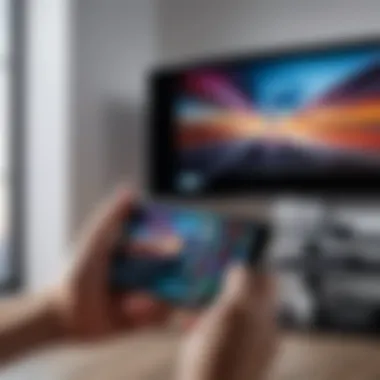
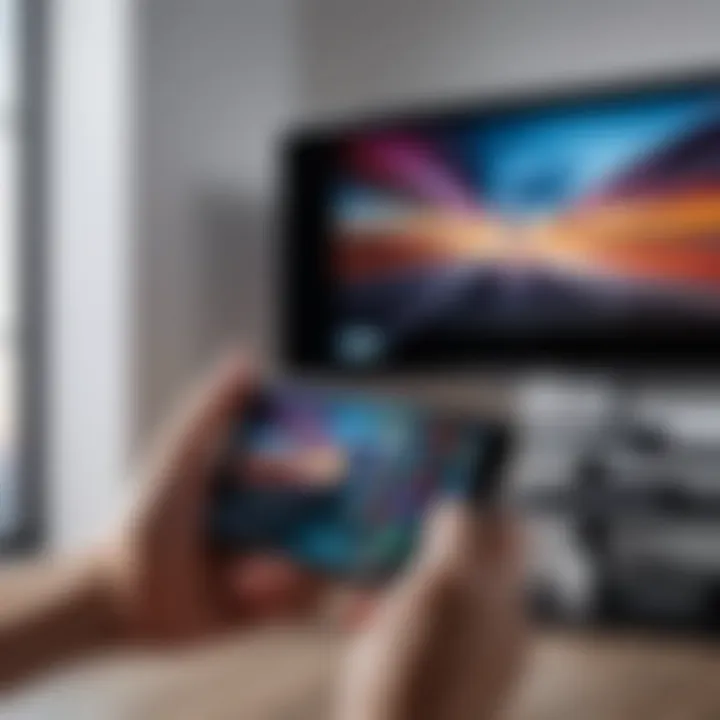
Intro
In today's digital age, connecting our gadgets to bigger screens is a must. Whether you're presenting a work project, enjoying a movie night, or showcasing your latest vacation photos, displaying your smartphone screen on a television can enhance the experience significantly. With numerous methodologies available, this guide aims to break down effective ways to mirror or cast your device's display onto larger screens. We'll cover techniques suitable for both Android and iOS users, diving into the necessary equipment and processes while addressing potential hiccups along the way.
Product Overview
Understanding the various methods to cast your phone to a TV requires some clarity on the products involved.
Specifications
Most smart TVs today come with built-in features to facilitate screen casting. You'll find models from Samsung, LG, and Sony that support technologies such as Miracast for Android and AirPlay for Apple devices. If your TV doesn't have these features, you can utilize devices like Google Chromecast or Amazon Fire Stick, which serve as excellent bridges to link your phone and TV seamlessly.
Design
Modern casting devices are often compact and wireless, designed to sit snugly behind your TV or alongside it. For smart TVs, the integrated options mean no extra hardware is necessary—just your TV remote and a compatible smartphone.
Features
Key functionalities of these casting methods include:
- Screen mirroring: Duplicates your phone screen in real-time.
- Casting: Streams specific content like videos or presentations, freeing up your phone for other use.
- Multiple device support: Many systems allow multiple phones or tablets to connect at once, facilitating easy sharing during gatherings.
Pricing
While high-end smart TVs can run into the thousands, many mid-range options provide these features at a more accessible price point. As for casting devices, Chromecast can be found at around $30, while variations of smart sticks hang around $40 or more, depending on the features and brand.
Performance and User Experience
When shifting your phone's display to a TV, performance plays a pivotal role. The overall usage experience can vary significantly based on the device and method employed.
Speed
The responsiveness of mirroring or casting directly correlates with both your phone's hardware and your Wi-Fi connection speed. Typically, if both the TV and smartphone are modern devices, latency should be minimal. However, older models might struggle with lag.
Battery Life
Wireless casting can be a battery-drainer, especially during prolonged use. For heavy users of screen-sharing techniques, it's recommendable to keep your device plugged in to avoid a mid-movie battery crisis.
User Interface
Most applications used for casting (like Google Home or the built-in options on your device) feature user-friendly interfaces. Navigating through these is generally intuitive, allowing even less tech-savvy individuals to grasp the basics quickly.
Customization Options
Customization can vary among devices. For example, some smart TVs allow you to adjust the display settings after casting, enhancing visual quality without needing to tweak your phone settings.
Comparison with Similar Products
When deciding on the best way to display your phone screen on a TV, comparing options is essential.
Key Differences
The main comparison lies in whether you use a smart TV’s built-in features or an external device. Smart TVs offer simplicity, while external devices like Chromecast provide flexibility across multiple screens.
Value for Money
From a value perspective, if you frequently cast content, investing in a robust smart TV could prove more economical in the long run compared to buying multiple casting devices over time.
Expert Recommendations
Best Use Cases
Applications of screen mirroring include:
- Business presentations: Making meetings more productive.
- Family movie nights: Larger screens amplify enjoyment.
- Social gatherings: Sharing photos and videos instantly.
- Gaming: Displaying mobile games on a big screen for a more accurate and enjoyable experience.
Target Audience
While this guide primarily supports tech-savvy individuals, the simplicity of modern casting technologies caters to a broader audience. Casual users seeking a simple solution can also benefit from the straightforward setup of many smart TVs.
Final Verdict
Whether you opt for a TV with built-in capabilities or use external devices, the ability to cast your phone screen opens up a world of multimedia opportunities. It’s all about choosing the method that best fits your needs and lifestyle, ensuring that every experience puts the focus on ease and enjoyment.
Overview of Screen Mirroring
In the age where small screens dominate our daily lives, the ability to display your smartphone's screen onto a larger canvas like a TV becomes increasingly vital. It's not just about enlarging content; it’s about transforming how we experience information, entertainment, and communication. This article explores the ins and outs of screen mirroring, delving into techniques tailored for both Android and iOS users. But why should one consider mirrorings?
First, let’s discuss the core concept. Screen mirroring allows you to replicate the display of your smartphone on your TV, making everything from streaming movies to sharing family photos a breeze. It opens the door to collaborative entertainment experiences, where a group can enjoy the same content simultaneously, instead of gathering around a phone.
Definition and Purpose
Screen mirroring, often used interchangeably with screen casting, refers to the process of sending your phone's screen content to another display, typically a TV. The primary purpose is rather straightforward: it extends the visual capacity of your device. Imagine watching your favorite series on Netflix or scrolling through vacation pictures on a massive screen instead of squinting at a mobile device.
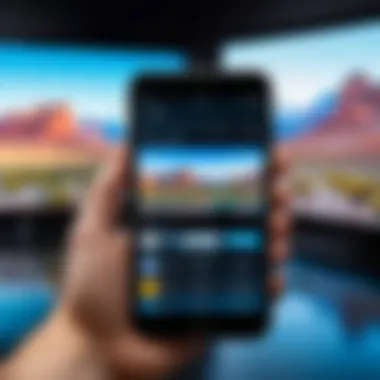
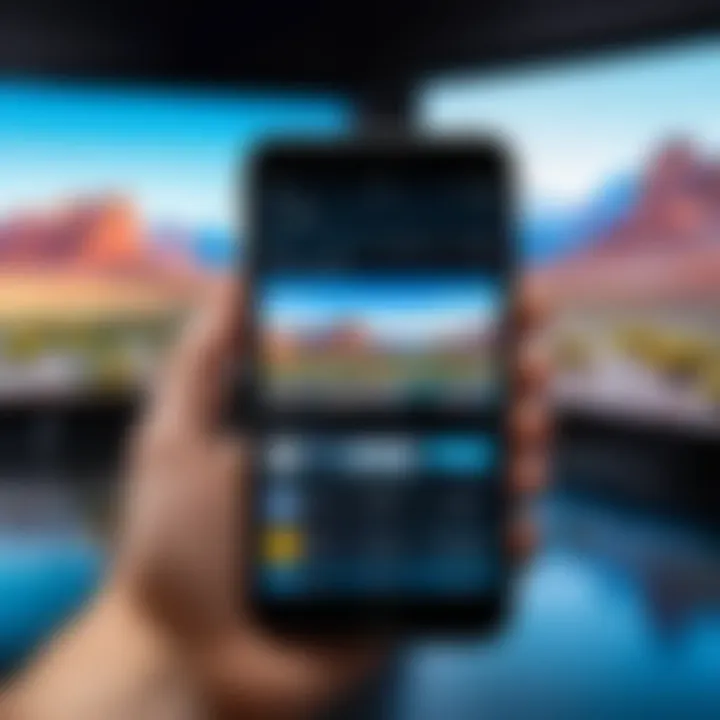
However, it goes beyond mere aesthetics; it enriches user interaction. By utilizing bigger displays, applications like video calls and presentations become more effective and engaging. When you connect that phone of yours to the TV, it not only enhances visibility but invites participation from others in the room, allowing them to engage in discussions or decisions they usually wouldn't be part of when viewing on a smaller screen.
Benefits of Screen Sharing
The benefits of screen sharing are plentiful and can often outweigh the initial setup efforts. Here are some significant advantages:
- Enhanced Viewing Experience: Watching movies or sports events on a larger screen is simply more enjoyable. It's akin to elevating from a simple café to a full-fledged cinema experience.
- Collaboration Made Easy: For work presentations, showcasing your screen to a group can foster better communication and understanding. Gone are the days where someone leans over your shoulder to catch a glimpse.
- Interactive Gaming: Imagine gaming with friends where everyone can see the action on the TV rather than huddling around one small screen. This communal gaming experience is a game-changer, pun intended.
- Easy Content Sharing: Whether it’s displaying a recipe from your mobile while cooking or sharing travel plans, screen mirroring facilitates a seamless flow of information among audiences.
"The shared experience of viewing is more than just about seeing the same thing – it’s about creating memories together."
Necessary Equipment
When it comes to displaying your phone screen on a TV, having the right equipment is a must. This can make or break your overall experience. Think of it as the foundation of a house; if the base isn’t solid, then the structure will falter. In this section, we’ll go over the key components that are essential for screen mirroring.
Compatible TV Models
Before diving headfirst into tech details, it's crucial to understand that not all TVs are created equal. Some models come packed with advanced features that allow seamless screen mirroring while others lag behind. Typically, smart TVs from brands like Samsung, LG, and Sony lead the pack. They support various wireless protocols making it easier to connect your device without a clutter of wires.
- Smart TVs: Look for models that support either Miracast or DLNA. These technologies are often built into the TVs and enhance the screen mirroring experience.
- Older Models: If you have a traditional television without smart capabilities, don’t fret! You can still display your phone’s content using external devices like Chromecast or Roku. They act as intermediaries that bridge the gap between your phone and TV.
Always check the manufacturer’s guidelines to confirm compatibility before investing.
Required Cables and Adapters
Even if your TV supports mirroring, certain situations may call for cables or adapters. For those times when wireless connections aren’t an option, here's what you need:
- HDMI Cables: This should be your go-to choice if you want a stable connection. A simple HDMI cable can tackle screen mirroring without the risk of interruptions. It provides high-quality video and audio output.
- Adapters: Depending on your device, you might need adapters. For example, Android devices usually have a USB-C or micro USB port. You’d require a USB-C to HDMI adapter or a micro USB to HDMI adapter to connect to the TV. Always ensure that the adapter supports both video and audio transmission.
- Lightning Cables: For iPhone users, a Lightning Digital AV Adapter is oftentimes essential to facilitate connections.
Before you make any purchases, it pays to double-check the specifications of your phone and TV to avoid the all-too-common frustration of mismatched ports and connectors.
"Having the right equipment not only saves hassle but also significantly enhances your viewing experience."
Putting in the effort to ensure that your phone and TV are equipped for seamless communication will pay off in dividends when streaming your favorite shows or mirroring crucial presentations.
Using HDMI Cables
HDMI cables have become a staple in modern home entertainment setups. The reliability and ease of the connection they provide are hard to beat. When it comes to screen mirroring, using an HDMI cable can be a straightforward method that produces exceptional image quality and performance. Unlike wireless connections, which can sometimes falter due to signal issues or interference, HDMI provides a stable, high-definition link between your phone and TV.
Connecting Your Device
To connect your device using an HDMI cable, you’ll first need to ensure that you have the appropriate connectors. Most modern smartphones can connect via a USB-C to HDMI adapter; however, older models may require different types of adapters like MHL (Mobile High-Definition Link). Here’s a quick step-by-step guide to get you started:
- Gather the Necessary Adapters: Check if your phone needs a specific adapter.
- Connect the Adapter to Your Phone: Insert the adapter into your device’s charging port.
- Plug in the HDMI Cable: Connect one end of the HDMI cable to the adapter, then the other end to an available HDMI port on your TV.
- Select the HDMI Input on Your TV: Use your TV remote to switch to the corresponding HDMI channel.
Once connected, your phone’s screen should mirror on the TV, although the reflection might not be instantaneous. Sometimes, it takes a moment for everything to sync up.
Settings Configuration
Getting your phone connected is only half the battle; proper settings configuration can elevate your viewing experience significantly. After your device is connected and showing the display on the TV, you may want to adjust a couple of settings:
- Screen Resolution: Navigate to your phone’s display settings and ensure you set the screen resolution that's optimal for your TV. Higher resolutions will yield clearer, sharper images.
- Aspect Ratio: Depending on your TV and device, you may need to adjust the aspect ratio to avoid image distortion.
- Audio Settings: If your audio doesn’t seem to sync up well with the video, check your phone’s sound settings or the TV's audio settings to eliminate any lag.
Remember, every TV and device can have slightly different configurations, so consulting the user manuals might be handy if you encounter any discrepancies.
In summary, while HDMI cables may seem like a straightforward choice, they come with their unique setup needs and adjustments. Understanding how to connect and configure your device correctly will ensure a smoother, more enjoyable viewing experience.
Wireless Screen Mirroring
In today's digital age, the ability to share what's on your phone screen with a larger display is not just a luxury; it’s practically a necessity. Wireless screen mirroring simplifies this process, allowing you to showcase media and information without the hassle of cables and connections that can tie you down. With a few taps, you can turn your smartphone into a remote control for your multimedia experiences, expanding what you can do with a television and enhancing gatherings, presentations, or even solitary enjoyment.
People are often drawn to the convenience of wireless technology, as it removes barriers and promotes seamless interactions between devices. Imagine watching that funny video from your friend's birthday party or playing your favorite mobile game on a big screen. The experience of enjoying content together becomes significantly more enjoyable, facilitating better conversations and shared laughter.
Types of Wireless Technology
When it comes to wireless screen mirroring, several technologies stand out:
- Wi-Fi Direct: This peer-to-peer connection allows two devices to connect without a conventional network. It’s quick and efficient, perfect for those who want to mirror content without relying on a standard Wi-Fi network.
- Miracast: A popular choice for Android devices, Miracast creates a local Wi-Fi connection for seamless streaming without internet dependence. This is ideal for low-latency connection during gaming as well.
- DLNA: The Digital Living Network Alliance enables devices to communicate over a home network. It allows sharing of video, audio, and pictures, but comes with some limitations on device compatibility.
- Apple’s AirPlay: Exclusive to Apple devices, it provides a smooth and efficient way to mirror your iPhone or iPad to a compatible TV or Apple TV.
Understanding these technologies arms you with the information needed to choose the best method for your specific devices and preferences.
Using Google Chromecast
Google Chromecast revolutionized the way we interact with our televisions. It turns any TV with an HDMI port into a smart TV. To use it, you plug the Chromecast device into your TV and set it up alongside your Wi-Fi network. Once configured, mirroring your Android device is as easy as selecting the Cast option in supported apps or from the quick settings panel.
Here's a simple step-by-step on how to use it:
- Connect Chromecast to the TV and power it on.
- Ensure your phone and Chromecast are on the same Wi-Fi network.
- Open an app that supports casting, like YouTube or Netflix.
- Tap on the Cast icon and select your Chromecast device from the list.
Let’s not forget about the Google Home app, which adds several additional features, enabling you to cast your entire screen for presentations or sharing photos.
Using Apple AirPlay
For those immersed in the Apple ecosystem, AirPlay offers a slick experience for screen sharing. AirPlay lets you mirror your iPhone or iPad’s screen to an Apple TV or AirPlay 2-compatible smart TV.
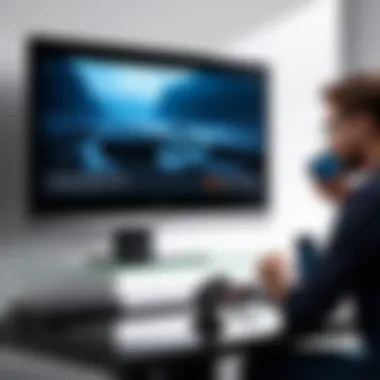

Setting up AirPlay is straightforward:
- Connect your iPhone to the same Wi-Fi network as your Apple TV.
- Swipe down from the upper right corner (or up from the bottom on older models) to access the Control Center.
- Tap on Screen Mirroring.
- Select your Apple TV or compatible device.
This technology delivers not just video and audio but allows for excellent integration with other Apple services. It’s a smooth and comfortable experience that maintains a high quality of content shared.
Remember, it's always a good idea to keep your devices updated to ensure all features function smoothly and to access the latest enhancements that improve performance.
To sum up, wireless screen mirroring is not only convenient; it opens a door to a shared viewing experience that connects people through media. With a variety of technologies available, tech-savvy individuals can exploit the capabilities of their smartphones in fantastic ways, transforming any humble television into a multimedia powerhouse.
Screen Mirroring on Android Devices
Screen mirroring on Android devices has become an essential capability in today’s interconnected world. With the rise of smartphones, users often find themselves wanting to share content from their devices on larger screens, such as televisions. This section dives into the specific benefits and considerations of using Android devices for screen mirroring, making it a relevant and practical topic for tech-savvy individuals.
One primary benefit of screen mirroring for Android users is the convenience of casting multimedia content. Whether it’s watching movies, viewing photos, or playing games, having a bigger screen enhances the experience immensely. Imagine watching a family vacation video on a large TV instead of squinting at a small phone display. It’s a game changer.
Moreover, being able to share your screen can make presentations or group activities significantly more engaging. When everyone can see what’s on one device, collaboration becomes not only productive but also interactive. This is particularly valuable in educational settings or during business meetings, where visuals matter.
When considering screen mirroring, it’s crucial to take into account compatibility and the required settings on your Android device. Not all TVs support the same forms of connectivity, and knowing this upfront can save time and frustration. Additionally, the process can differ between devices, so having a baseline understanding helps set realistic expectations.
Steps for Android Screen Sharing
To get started with screen sharing on an Android device, follow these straightforward steps:
- Check Compatibility: Ensure your TV supports screen mirroring. Models with built-in Chromecast, Miracast, or specific apps like SmartView are typically compatible.
- Connect to the Same Network: Both your Android device and TV must be connected to the same Wi-Fi network for seamless mirroring.
- Initiate Screen Mirroring:
- Choose Your TV: From the available devices, select your TV.
- Start Displaying: Once connected, you should see your Android screen on the TV. It’s like flipping a switch—easy as pie.
- Open the settings on your Android device.
- Navigate to ‘Connected devices’ or ‘Connections’.
- Select ‘Cast’ or ‘Screen Mirroring’. This may vary, depending on your device manufacturer.
Troubleshooting Android Issues
Sometimes, the process isn’t as smooth sailing as one would hope. Here are common issues you might encounter and their solutions:
- Connection Failures: If your Android device fails to connect to the TV, check if both are on the same Wi-Fi network. Restarting both devices may clear out any minor glitches.
- Poor Quality: If the display appears grainy or laggy, it might indicate bandwidth issues. Ensure no other devices are heavily using the network or switch to a wired connection, if possible.
- Compatibility Challenges: Older TV models may not support the latest mirroring standards. Checking compatibility with your TV manufacturer’s guidelines can provide some clarity.
Remember, a little patience and trial-and-error go a long way when troubleshooting tech problems. If a quick fix doesn’t work, it might be worth consulting manufacturer websites or forums like Reddit for community advice.
"Screen mirroring empowers users, enhancing the sharing experience by bridging the gap between small and large displays."
Screen Mirroring on iOS Devices
When it comes to bridging the gap between your iPhone and a larger display, understanding the ins and outs of screen mirroring on iOS devices is paramount. For many, the ability to cast content from their iPhones to a TV enhances their viewing experience significantly. Whether it's for watching movies, playing games, or sharing photos with family and friends, screen mirroring offers convenience and enjoyment. This section will delve into the specific steps involved in iPhone screen sharing and troubleshoot common issues that may arise.
Steps for iPhone Screen Sharing
The process of screen mirroring an iPhone isn't overly complicated, yet it does require specific steps to ensure a smooth transition. Here’s a straightforward approach:
- Check Compatibility: Make sure both your iPhone and the TV are compatible with AirPlay. Most modern smart TVs support this feature, but it's wise to double-check.
- Connect to the Same Wi-Fi Network: Both the iPhone and the TV should be connected to the same Wi-Fi. If you have separate networks, screen mirroring will not function properly.
- Access Control Center: On an iPhone with Face ID, swipe down from the upper-right corner of the screen. For iPhones with a Home button, swipe up from the bottom edge.
- Select Screen Mirroring: Tap on the 'Screen Mirroring' option, displaying a list of available devices.
- Choose Your TV: Find your TV’s name in the list and select it. If you see a prompt to enter a password, enter the one displayed on your TV screen.
- Start Mirroring: Your iPhone’s screen should now be mirrored to the TV. You can now navigate to any app or content, and it will display on the larger screen.
These steps should get you up and running in no time, allowing you to flit seamlessly between apps and media.
Troubleshooting iOS Issues
Even with the best intentions, things can go awry while trying to mirror your iPhone. Here are some common issues and solutions:
- Issue: Unable to Connect
Solution: Ensure both devices are on the same Wi-Fi network. Restart both your iPhone and your TV if the problem persists. - Issue: Lagging or Poor Quality
Solution: A slow Wi-Fi connection can result in lag. Make sure your internet is running smoothly, and consider moving closer to the router if possible. - Issue: Not Seeing the TV on the List
Solution: Check if your TV is turned on and AirPlay is enabled. Additionally, ensure your TV's software is up to date.
"Ensuring both devices are compatible and connected to the same Wi-Fi are the cornerstones of successful screen mirroring."
- Issue: No Sound on TV
Solution: Check the volume settings on both your iPhone and TV. Sometimes, it just needs a nudge to switch from the iPhone speaker to the TV system.
Understanding these solutions can help you navigate through most common hurdles you may face. The ability to share your iPhone screen with a bigger viewing space is a feature worth mastering.
Third-Party Applications
Using third-party applications can significantly simplify the process of displaying your phone screen on a TV. These apps serve as tools that bridge the gap between devices, often offering additional features that standard built-in options cannot. For tech-savvy individuals looking to enhance their multimedia experience, the availability of these applications is invaluable.
The importance of third-party applications lies in their versatility and ease of use. Many of them provide seamless connections across various platforms, accommodating both Android and iOS users. Furthermore, there's often broader compatibility with assorted TV brands, bypassing the restrictions tied to built-in technologies. This becomes especially handy for those with older TV models that may not support the latest wireless technologies.
Popular Apps for Screen Mirroring
Several popular applications have carved a niche in the screen mirroring space. Let’s delve deeper into a few noteworthy examples:
- ApowerMirror: This app stands out because of its user-friendly interface and cross-platform support. Users can mirror their phones to a TV or PC without much fuss, making it suitable for anyone, regardless of technical know-how.
- LetsView: Besides mirroring, LetsView also offers additional features such as screen recording and capture, further enhancing its utility for users who wish to save content directly.
- AirServer: Primarily aimed at iOS users, AirServer enables an easy connection for displaying screens to compatible smart TVs while providing a high-quality experience in terms of resolution.
These applications each bring their own unique sets of features, catering to different needs and preferences.
Evaluating App Performance
When considering which third-party app to use for screen mirroring, the evaluation of performance is crucial. Here are a few aspects to keep in mind while making this assessment:
- Connection Stability: An app should maintain a reliable connection without unnecessary dropouts. High-quality applications will ensure minimal disruption, allowing for smooth streaming.
- Latency Levels: Performance latency can be a real spoilsport. A good app will exhibit low delay between the phone screen and TV display, critical for activities like gaming or video conferencing.
- User Feedback: Often, the best insights come from the community. Checking platforms like Reddit can provide real user experiences, highlighting both the strengths and weaknesses of different apps.
An efficient way to choose the right app is to try a couple and see how they align with your specific needs. Factors like ease of use, additional features, and cost should influence your decision. Ultimately, the right app can turn your screen mirroring experience from a hassle into a breeze.
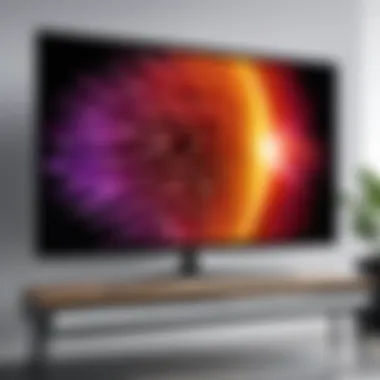
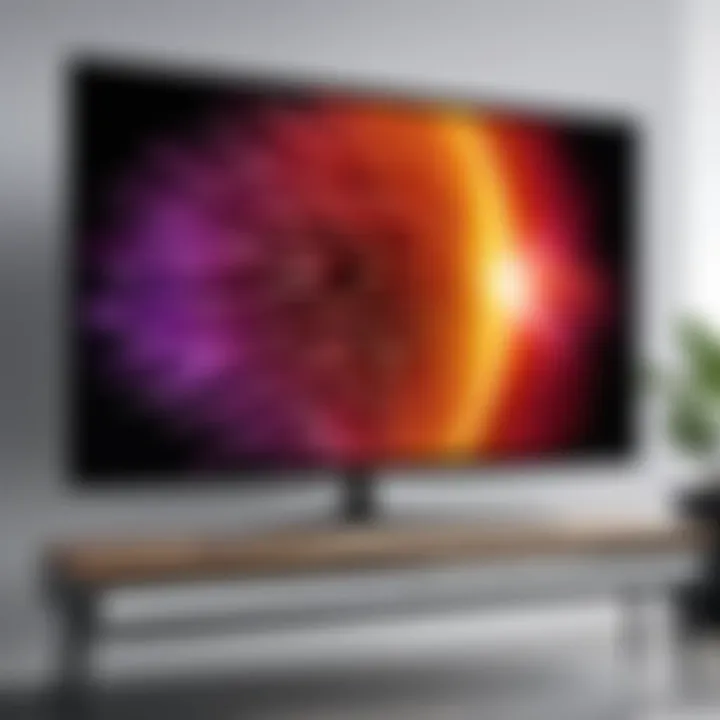
Enhancing the Viewing Experience
When it comes to displaying your phone screen on a TV, the visual clarity and overall viewing experience can make or break your enjoyment. After all, it’s not just about sharing your content but also making sure it looks as good as it can. Enhancing the viewing experience should be a priority for anyone keen on making the most out of their multimedia integration.
Optimal Settings for Clarity
When you cast your smartphone onto a television, tweaking the settings can lead to a night-and-day difference in clarity. First and foremost, you want to ensure the TV is set to the correct input source, usually accessible via the remote or TV menu. It’s crucial; otherwise, you might end up staring at a blank screen or, worse, at another device!
Next, dive into the display settings of your phone. Often, there are options for adjusting the output settings. Check if there’s a resolution setting, and if so, select the highest available that your TV can handle. For those who have 4K capable televisions, aim for that ultra-high-definition output. Doing so maximizes the image quality, giving your content the justice it deserves.
One more tip is to experiment with the color settings. TVs nowadays often come with presets like ‘Movie’, ‘Game’, or ‘Sports’, which can adjust color saturation and brightness. Experimenting with these presets could add a fresh touch to your viewing experience.
"Tuning your settings is like finding the sweet spot for your favorite song. Once you get it just right, everything flows smoothly.”
Adjusting Screen Resolution
Screen resolution plays a pivotal role in how images and videos appear on your TV. If you're merely mirroring your screen without adjusting the resolution, then you might end up with a pixelated mess that won't do anyone any favors. Here’s how you can change it.
Depending on your smartphone model, go into your device’s settings, look for the display settings, and seek the resolution options available there. Many Android devices allow you to choose between 720p, 1080p, and even 4K output depending on your device capabilities. Setting this correctly can drastically improve not just clarity but also overall viewing comfort.
If your TV supports advanced resolutions, check if there are any specific settings you need to enable on the TV itself. Some modern TVs have options that allow for automatic upscaling, which can enhance the lower-resolution content, making it sharper. Just remember, not all content is created equal; high-resolution videos will shine while older, lesser quality material may show its limitations.
Some additional considerations:
- Brightness and Contrast Adjustments: Just as with clarity, these settings on your TV can enhance color fidelity and improve detail visibility, especially in darker scenes.
- Aspect Ratio: Ensuring that the right aspect ratio is set can prevent awkward stretching or squishing of images, maintaining the intended look of the content.
Taking the time to optimize these settings ensures that your viewing experience doesn’t just meet the basic requirements but elevates it to where you can truly savor the details and richness your content offers.
Common Issues and Solutions
When trying to display your phone screen on a TV, encountering problems can be about as welcome as a mosquito at a picnic. Understanding common issues, along with their solutions, is key to enjoying a smooth viewing experience. Addressing these matters not only enhances your ability to troubleshoot, but it also equips you with the knowledge to steer clear of common pitfalls. Whether it's figuring out why your connection drops mid-movie or deciphering why there’s a delay in what you see, resolving these issues can transform frustration into satisfaction.
Connection Problems
Connection problems can crop up like weeds in a garden, right when you least expect it. Often, users find themselves stuck with their screens hanging in limbo, unable to connect their devices to the TV. This can happen for various reasons, such as:
- Incompatibility: Not all TVs support the same screen mirroring protocols. Double-check that your TV model is compatible with Miracast or AirPlay, depending on whether you're using an Android or iOS device.
- Network Issues: A weak Wi-Fi signal can hamper the connection. Ensure that both your phone and TV are on the same network and in close proximity to the router for optimal performance.
- Settings Misconfiguration: Sometimes, settings get mixed up. Ensure that screen mirroring is enabled on your phone and that the correct input source is selected on the TV.
If you find yourself grappling with these connectivity woes, try restarting both devices and reconnecting.
Performance Latency and Lag
Nothing kills the mood like a laggy screen. Performance latency can be frustrating, especially during a high-stakes gaming session or while watching action-packed videos. If you feel like you're watching a poorly dubbed movie, it's time to consider a few factors:
- Signal Interference: Other electronic devices in the vicinity can interfere with communication. Move any potential disruptors, such as microwaves or wireless speakers, away from your setup.
- Quality of the Wi-Fi: If you have a lot of devices connected to your network, the bandwidth can be spread too thin. Disconnect unnecessary devices to free up bandwidth for your screen mirroring session.
- Device Performance: Older smartphones may struggle with processing demands. Consider closing other applications running in the background to give your device more breathing room.
To deal with latency, adjusting settings related to resolution on your device might help improve the situation. In some cases, switching to a wired HDMI connection can provide a more stable experience, eliminating lag altogether.
Future Developments in Screen Sharing Technology
In today's digital era, the way we share our screens is evolving rapidly. As technology progresses, new methods for screen sharing and mirroring are emerging, making the process smoother and more efficient. Understanding the future developments in screen sharing technology is essential, especially for those looking to optimize their viewing experiences. This section will explore trends shaping the way we project our phone screens onto TVs and predict what new features might become standard practice in the near future.
Trends in Wireless Technology
Wireless technology has always been at the forefront of screen sharing innovations. Here are some key trends currently shaping this domain:
- 5G Connectivity: 5G networks are revolutionizing how we interact with devices. With higher speeds and lower latency, users can expect a more seamless experience when mirroring their devices to a TV. The enhanced bandwidth allows multiple users to connect without noticeable lag.
- Wi-Fi 6: This latest generation of Wi-Fi technology promises faster data transmission rates and improved performance in congested areas. Devices that support Wi-Fi 6 can effortlessly share screens, enhancing the overall experience for users in crowded spaces.
- Bluetooth Advancements: As Bluetooth technology continues to improve, we are witnessing better compatibility and reliability. This allows for easier pairing of devices, making it a preferred method for those who want a quick connection without fuss.
More and more users leveraging advanced wireless technologies will realize the importance of upgrading their hardware, ensuring compatibility to take advantage of these improvements.
The trend is clear: with wireless technology advancing at a rapid pace, screen sharing is becoming less of a chore and more of an everyday convenience.
Predictions for New Features
Considering how swiftly technology progresses, many predict notable features that will enhance our screen mirroring capabilities. Here are some potential developments to keep an eye on:
- Integrated AI Support: Future devices might incorporate artificial intelligence, optimizing performance by predicting connection issues or adjusting settings automatically based on user behavior. Imagine a device that seamlessly recognizes the best resolution or format for the context of the viewing experience.
- Multi-User Capabilities: Expect to see advancements in multi-user functionalities, allowing several devices to share screens simultaneously without any complications. This could be particularly useful in a collaborative environment, like in meetings or group activities.
- Enhanced Security Protocols: As our reliance on wireless sharing grows, so does the need for robust security measures. Future developments may include advanced encryption methods or secure access controls to protect personal information when mirroring sensitive content.
- Augmented Reality (AR): AR could change how we experience screen mirroring by allowing an overlay of digital content onto real-world objects. For example, if you’re displaying a recipe, AR could guide you directly on your countertop, showing you step-by-step instructions in a holographic format.
As these developments unfold, it is important for users to stay informed, adapting to new standards and capabilities to make the most out of their screen sharing experiences. The future of screen sharing is bright, and for those in the tech-savvy realm, it presents exciting opportunities that go beyond what we currently experience.
Closure and Final Thoughts
In wrapping up our discussion on the myriad ways to display your phone screen on a TV, it’s crucial to recognize the significance of engaging with this technology. Screen mirroring or casting isn’t simply a gimmick or address for tech enthusiasts; it’s a pathway that enhances our multimedia experiences, allowing us to share and view content on a grander scale. From binge-watching series with friends to creating impactful presentations, the importance of this capability cannot be overstated.
Summary of Methods
We’ve traversed a variety of methods for achieving this screen display:
- Wired Connections - HDMI cables remain a steadfast option, delivering crisp images consistently. Whether it’s Android or iOS, connecting using a cable might be the simpler route, sans dependency on Wi-Fi.
- Wireless Solutions - Technologies like Google Chromecast and Apple AirPlay provide the freedom of mobility. Users can mirror their screens from afar without being chained to the TV.
- Third-Party Applications - Various apps out there cater to different devices, each with unique merits and capabilities. Evaluating them can lead to discovering a solution perfectly suited for individual needs.
- Troubleshooting - Understanding common pitfalls when mirroring can save a great deal of frustration. Knowing when to reset your devices or adjusting settings is part of the savvy user’s toolkit.
By contemplating these methods, anyone can dismantle the seemingly complex nature of screen sharing and discover personalized solutions to suit their lifestyle.
Final Recommendations
As we conclude, here are some final pointers:
- Prioritize Compatibility - Before diving into any connection method, confirm that your devices can indeed communicate with one another.
- Keep Your Connections Stable - Be it wired or wireless, ensure that your connection is both fast and reliable to prevent buffering interruptions during crucial moments.
- Experiment - Don’t hesitate to explore various applications or methods. Each provides different functionalities that may elevate your experience in unexpected ways.
- Stay Updated - Technology evolves and so do the applications. Keeping your devices and software updated will not only enhance performance but can also unlock new features.
In summation, the methods to display your phone screen on TV can transform mere visual experience into engaging gatherings, productive meetings, or even a comforting movie night. With the right approach, anyone can leverage these tools to enhance how they consume and share content.







